Tigerlabs Digital Health Innovation Conference Brings Big Data's Role into Focus
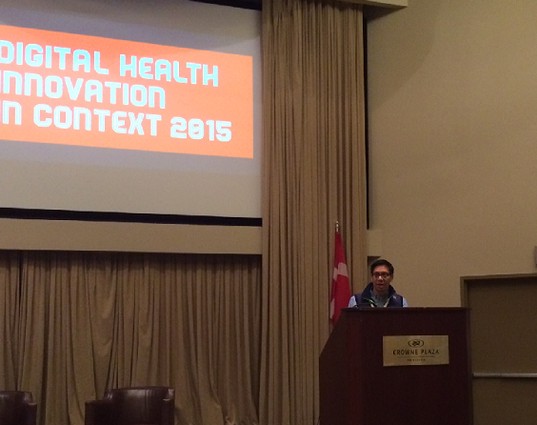
Speakers at the “Digital Health Innovation in Context” conference, held in Princeton on April 23, addressed the topic of healthcare tech and put a spotlight on some of the players and trends in the field. The conference, sponsored by Tigerlabs, focused on the use of data in health tech.
An early morning keynote was delivered by Cheryl Swirnow, cofounder and CEO of Sherpaa, a New York-based company that allows employers to provide an email interface so that employees can communicate with doctors employed by Sherpaa. She described how companies signed up with Sherpaa find that their employees visit doctors and emergency rooms less frequently, resulting in cost savings in insurance premiums.
Sherpaa’s doctors provide acute medical care for employees and write prescriptions for them. Company guides answer questions about insurance and are advocates for the patients, finding them the right specialists to see. The company also provides analytics to the employers. “We resolve 70 percent of our medical visits in-house,” said Swirnow.
“It’s the millennial factor,” this is what millennials want, she said. “The first companies we signed up were all in the tech sector, and they were willing to try new things.” The program was very popular with their employees. Now law firms and accounting firms are signing up because it’s a way to attract and keep millennials, she added.
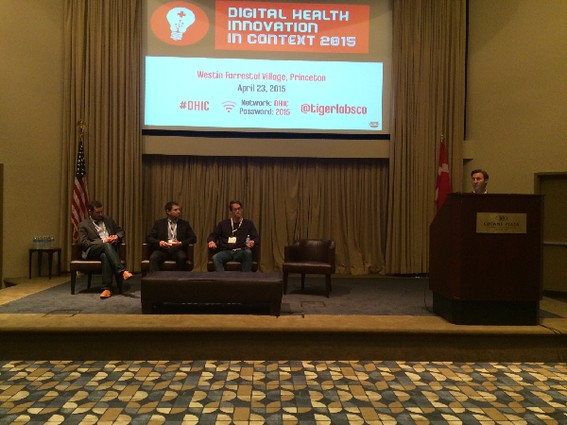
A panel moderated by Ian P. Goldstein, a partner at Princeton office the law firm Drinker Biddle & Reath, discussed trends and startup companies that are disrupting the healthcare ecosystem.
Colin Beirne, managing director of Two Sigma Ventures (New York), told the audience that the healthcare marketplace reminded him of how financial services had used big data to transform the financial markets. “We are following the creep of the industries that are being disrupted by data,” he said. “We see more and more industries being disrupted.” And healthcare will be completely disrupted by big data in the next decade or two, he predicted.
David Drahms, of Osage Venture Partners (Bala Cynwyd, Pa., and Princeton) said that his early-stage investment fund, which invests in post-revenue B2B software companies on the East Coast, spends “a lot of time in healthcare.” Drahms added, “We tend to prefer businesses that, if they are selling to providers, they are also selling to someone else, such as payers, given how difficult it can be to sell to providers.”
Evan Nicholas, speaking for Susquehanna Growth Equity (Bala Cynwyd, Pa. and Israel) said that his venture firm specializes in healthcare business models that fit within the current modes of behavior. He explained that behavior modification aimed at consumers, payers or providers is too difficult to achieve. In addition, “Anything that is too drastic, whether you are talking about changing consumer behaviors or institutions, is something we are averse to.”
Responding to a question on how good the market is for digital-health entrepreneurs, Beirne said, “We’re in a frothy part of the cycle right now. … It’s a great time to be an entrepreneur in that there is lots of capital available,” and valuations are high. Drahms agreed. “There are a ton of opportunities here,” he said. But since healthcare is dominated by big institutions, he noted, “it’s going to take a long time to change. … I think we are in the early stages of a long continuous cycle of change despite valuations that are pretty robust right now.”
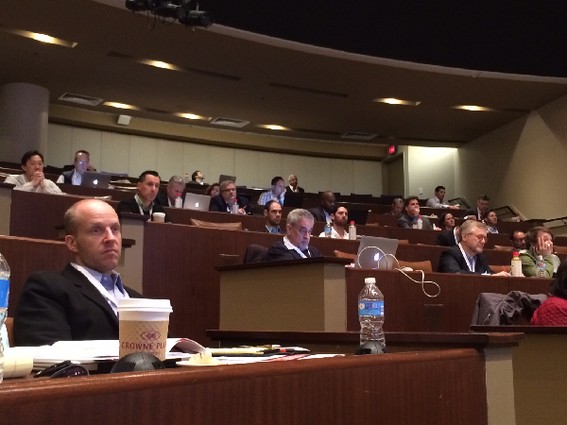
| Esther Surden
Kathleen Coviello, director of the Technology & Life Sciences Division at the New Jersey Economic Development Authority, moderated a panel discussion titled “Data is the New Asset.” The panel included Drew Schiller, cofounder and CTO of Validic (Durham, N.C.); Jason Wang, founder and CEO of TrueVault (San Jose, Calif.); and Stuart Henderson, managing director of Accenture (Florham Park and Murray Hill).
“We think digital health is really taking off in New Jersey,” Coviello told the audience. “We have great roots here between all of our IT folks, Alcatel-Lucent and Bell Labs, combined with pharma, and it makes for a very interesting opportunity locally. We are seeing tremendous growth in healthcare IT startups in New Jersey.”
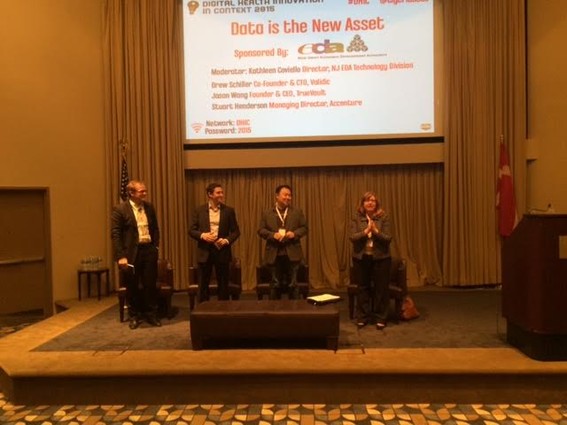
One question Coviello asked the panelists concerned the vast amount of different types of data that is being collected by today’s wearable-device industries. “Is there a standard way to merge all these different digital devices together and the data they collect, and does it create interoperability issues?”
Schiller answered that “all the devices are either delivering similar data in different ways or completely unique data. … We are in a Brave New World in terms of the amount of data and the types of data out there.”
Schiller said that his firm tries to create some sanity out the data by looking at different verticals and developing a standard presentation based on what makes sense for the data. “We try to focus on data liquidity.” However, he acknowledged, each of the health trackers from Fitbit, Jawbone etc. has something unique, and “we make sure that this extra data flows through.”
Schiller then observed, “What’s really interesting is in the area of new devices coming out.” For example, there is a sunlight tracker for people with seasonal affective disorder that measures the amount of sunlight a person is exposed to. The metric for this would be very difficult to standardize, he said. “This is the direction sensors are heading with unique data points that are able to grab data in new ways.”
“There is a wide variety of sophistication in [application programming interfaces] for the health and fitness apps out there,” he added. Some are great to work with and some are not. No matter what, “we are committed to grabbing the data.”
Henderson said that, when it comes to medical records, Accenture is at the analytic front, and is now looking at sources with 90 million lines of data in them. He noted that great progress was being made on the connection issue with regard to traditional electronic medical records. The company sometimes makes arrangements with certain providers to move data around in a particular context, he said. They may be looking at a drug launch, for example. Accenture uses technology from one of its portfolio members, Liaison Technologies (Alpharetta, Ga.), to make this work.
Stephen F. DeAngelis, president and CEO of big data company Enterra Solutions (Newtown, Pa.) hosted a lunch-and-learn at the conference, focusing on Enterra’s Cognitive Reasoning Platform, which identifies and understands non-obvious connections that lead to innovative new product development, heightened consumer understanding, enhanced supply chain execution, and more efficient and targeted consumer marketing.
He discussed how the same platform could be used in healthcare, and mentioned that Enterra was opening an office in the Princeton area in order to be close to the mathematicians at Princeton University.
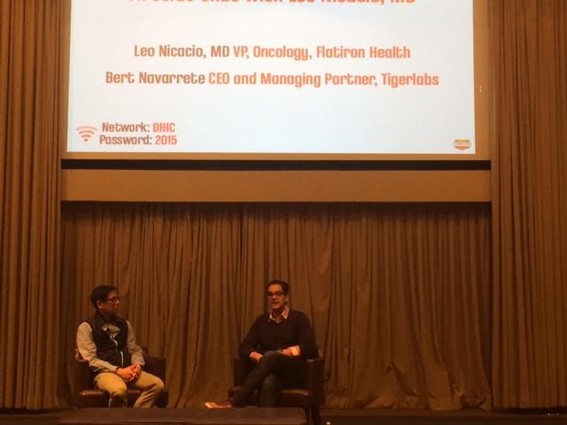
In an afternoon presentation, Dr. Leonardo V. Nicacio, clinical lead for Project Data Sphere at Flatiron Health (New York), talked about the serious nature of his company’s mission to organize all existing real-world oncology data. The fight against cancer is incredibly disjointed, he acknowledged. The data, which is siloed in community clinics and academic centers, is incredibly hard to get to. “Sometimes the department that is two floors up doesn’t know what the first floor is doing,” he told the group.
“We are missing valuable information that could help us understand cancer,” he told the group. “We should be connecting this information in a HIPAA-compliant way.”
Nicacio noted the importance of ensuring that the data a company selects is the right data and can be trusted. He also pointed out that “data liquidity,” getting the right data to the right person at the right time, is an unmet medical need with no solution in sight. Moreover, electronic medical records aren’t interoperable, and often don’t have unstructured data.
Nicacio provided a look at some of the ways Flatiron Health is attacking these issues by using analytics on unstructured data to find solutions to oncology problems and to improve patient outcomes, said Nicacio. He also showed the audience some research that demonstrated how the use of coded data compared with the use of unstructured techniques.

